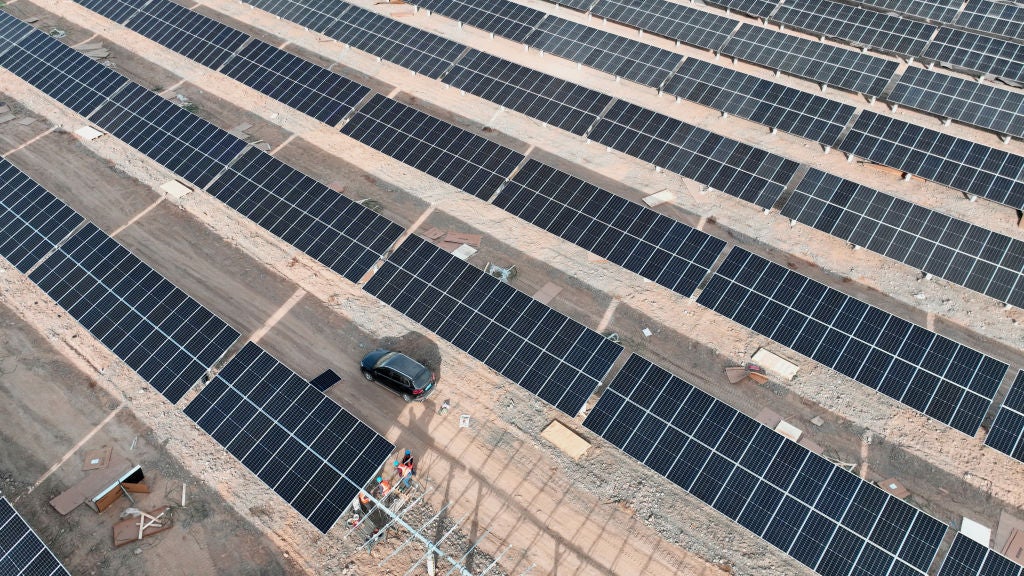
The next decade is going to be characterised by a huge demand for investment, according to TS Lombard’s head of research Andrea Cicione. During a panel discussion about asset allocation in the age of inflationary volatility, organised by TS Lombard and GlobalData, he explained that there are a number of causes that will drive this demand, but the three that stand out are related to the need for more energy independence, manufacturing capacity in the West and the green transition.
Will this boost demand for investment, and in which sectors? What are the drivers behind this?

Discover B2B Marketing That Performs
Combine business intelligence and editorial excellence to reach engaged professionals across 36 leading media platforms.
The need for energy independence and manufacturing capacity
According to Cicione, reason number one is the most immediate: the need for more energy independence. He explained that US has largely achieved energy independence, but Europe is still some way from this achievement, saying: “The fact that we cannot rely on Russian energy anymore means that a lot of investment needs to go into making sure that Europe can stand on its own two feet when it comes to energy, and assuring availability of it.”
Cicione explained that the second reason – the need for construction and manufacturing capacity to be built in the West – will be another key source of demand for investment.
The rise of political populism, the transfer of wealth and income from the West to the East, the fragility of supply chains, and even the risk of China invading Taiwan have caused multinational organisations and investors to reconsider their global footprints.
As a result, there has been a demand for shifting operations closer to each company’s headquarters or home markets. This ‘reshoring‘ or ‘nearshoring’ comes as companies are looking to waterproof their investments by mitigating risk and future disruptive events that could lead to another collapse of just-in-time supply chains.

US Tariffs are shifting - will you react or anticipate?
Don’t let policy changes catch you off guard. Stay proactive with real-time data and expert analysis.
By GlobalDataAnalysis by Investment Monitor shows that Asia-Pacific experienced a decline in manufacturing business function projects between 2019 and 2021, while western Europe saw an uptick in projects, despite the outbreak of the Covid-19 pandemic.
More specifically, the analysis shows that there has been a significant decline in textile manufacturing projects in Asia-Pacific during this three-year period. There were four projects, opened or launched, in 2021 in Asia-Pacific, down from 37 in 2019 and 13 in 2020.
There has also been a decline in automotive manufacturing business function projects in Asia-Pacific, as our data shows that 44 projects were launched or opened in 2021, down from 115 in 2019. Conversely, there was an increase in such projects in western Europe, which attracted 66 automotive manufacturing projects in 2021, up from 43 in 2020 and 36 in 2019.
The need for green transition
The third reason identified by Cicione is the green transition. “This is the one we have known about for a long time, but if anything, the need to transition to a more green economy is only getting more urgent,” he said.
Renewable and alternative power projects are considered a key investment area for transitioning to a greener economy, and our FDI Projects Database has identified an increase in greenfield projects in this sector between 2019 and 2021.
More specifically, there were 781 projects, announced or opened, in 2021, up from 568 in 2020 and 447 in 2019. Out of these projects, 92% were new and the rest were expansions.
The highest number of projects were in photovoltaic solar power, followed by onshore wind power, miscellaneous renewable and alternative power, offshore wind power and waste-to-energy power.
There were also projects in renewable energy storage, hydropower, nuclear power, geothermal power, cogeneration power and marine power.
The US was the clear winner when it came to attracting FDI projects in renewable and alternative power in the three-year period, followed by Spain, the UK and Brazil. Chile and Australia also attracted several projects.
When it comes to meeting these challenges, there are several issues that investors will need to overcome, such as the high inflation, high levels of debt, the trade and tech wars, the Russian invasion of Ukraine and the lingering effects of the Covid-19 pandemic. However, such is the pressing need for each of them that their progress is a necessity, not a choice, and geopolitical or economic factors cannot slow their journey.





